
Well-timed animation can elevate a fight scene from good to truly memorable. It’s all about making sure every punch and kick feels powerful and clear by perfectly matching the movement, visual effects, and impact frames. The fight scenes below are excellent examples of this, with careful planning, clever use of different animation techniques, and editing that clearly shows how one action leads to another without confusing the viewer. You’ll notice a combination of hand-drawn effects, digital editing, and camera angles all working together to maintain a consistent rhythm. These examples come from various studios and have different styles, but they all demonstrate how careful timing can make the choreography more impactful, emphasize the weight of each blow, and keep the audience engaged even during fast-paced action.
Naruto vs. Sasuke from ‘Naruto: Shippuden’

The fight scene is expertly paced, switching between fast-paced bursts of action and slower, more powerful exchanges. The animation clearly shows the movement of everything – from dust and water to energy trails – even as the camera quickly cuts between wide shots, medium shots, and close-ups. Animators use techniques like motion blur, impactful hits, and brief pauses to emphasize changes in direction while keeping the action clear. The fight is carefully choreographed, with each move feeling like a setup, a collision, and a follow-through.
Tanjiro & Nezuko vs. Rui from ‘Demon Slayer: Kimetsu no Yaiba’

Ufotable creates stunning visuals by combining traditional hand-drawn animation with 3D backgrounds. The camera moves smoothly through scenes, like a forest, while maintaining a realistic sense of depth. Special effects, like water breathing, are perfectly synchronized with sword movements, emphasizing the power of each strike. Digital techniques are used to make characters stand out and prevent the visuals from becoming cluttered. Each important attack is preceded by a slight slow-motion effect, ensuring the impact is clearly visible.
Kyojuro Rengoku vs. Akaza from ‘Demon Slayer: Kimetsu no Yaiba – The Movie: Mugen Train’

The film’s wide shot approach uses extended takes that keep the fighters’ movements and positioning clearly visible, especially against the dark backgrounds. Visual effects like fire and shockwaves are deliberately delayed slightly after each hit, making the impact and resulting force feel more distinct. The color palette enhances the quick action by using strong warm and cool contrasts to create a sense of depth. The editing also includes brief pauses before changes in momentum, ensuring each counter-attack is easily seen and understood.
Levi vs. Beast Titan from ‘Attack on Titan’
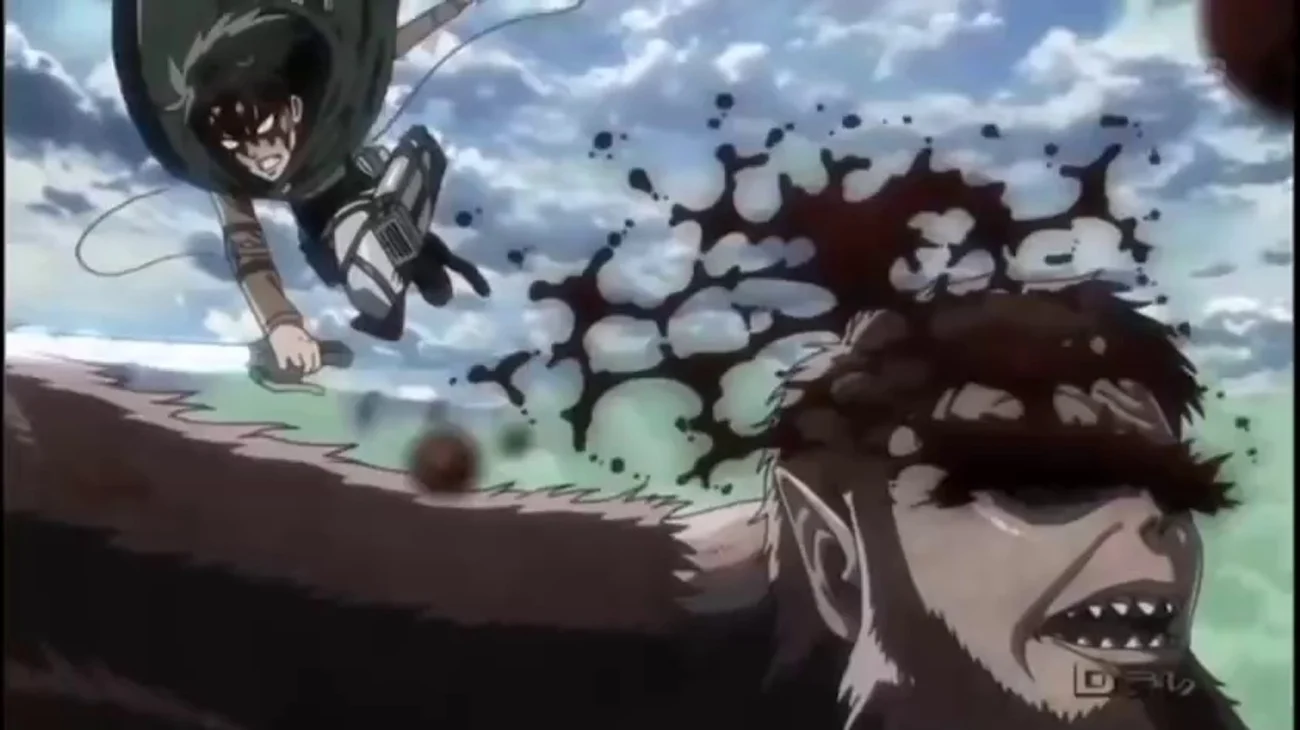
WIT Studio’s action sequences are visually dynamic and easy to follow. They use clever techniques like showing Levi moving with blurred trails and carefully timed boosts, creating a sense of speed and impact. The camera smoothly navigates the environment, circling around obstacles like trees and smoke, allowing for repeated views without losing track of the action. When blades strike, bright flashes and speed lines are added as separate effects, ensuring the silhouette of the blade remains clear. The paths of attacks are clearly defined, making it easy to understand the flow of combat even during fast-paced scenes.
Mob vs. Shimazaki from ‘Mob Psycho 100’

Studio Bones creates the effect of teleportation using quick, direct cuts and short pauses. They use visual distortions to show characters reappearing without blurring. When characters move, the background lines bend around them, creating a noticeable, precise shift in perspective. The animation emphasizes impactful power and environmental destruction over overly dramatic character movements, using a mix of smooth acceleration and abrupt stops. To keep the action clear during fast-paced moments, camera shake is added carefully in post-production, ensuring that outlines remain sharp.
Saitama vs. Boros from ‘One Punch Man’
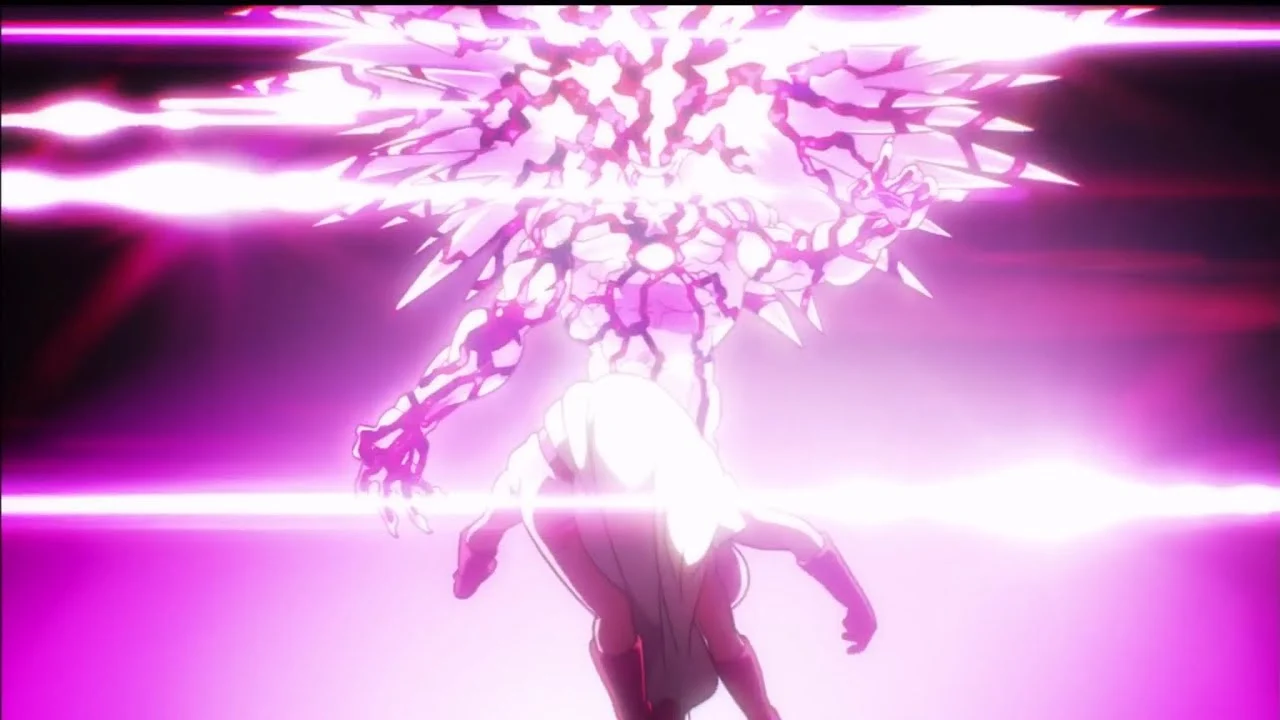
Madhouse created the exciting aerial chase by carefully coordinating the background movement with the action, maintaining a consistent sense of depth as the characters fly through the clouds. Streaks and multiple lines are used only during quick turns, while clear character outlines are kept during direct speeds. The timing of the background animation perfectly matches the character’s movements, so visual effects like sonic booms align with key moments. The scene frequently cuts to wide shots to show the overall positioning before returning to the fast-paced, close-up action.
Ichigo Kurosaki vs. Byakuya Kuchiki from ‘Bleach’
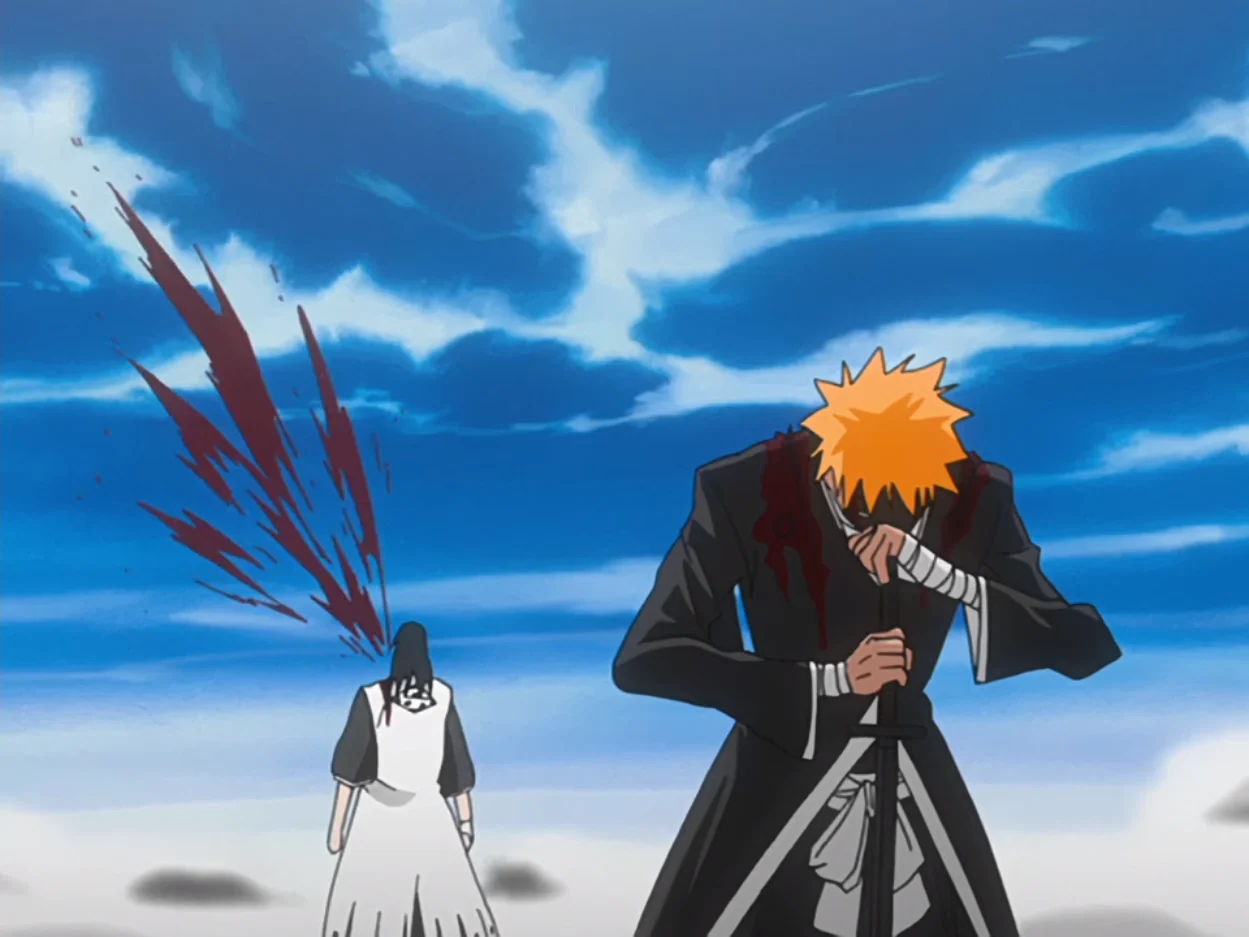
Studio Pierrot uses delicate petal effects to highlight the timing of sword movements, helping viewers follow the complex action. They show incredibly fast attacks by using few animation frames between movements, then pausing briefly, which creates a quick, impactful rhythm and makes deceptive maneuvers clear. The camera stays focused by moving along the lines of the background, even when characters move across the screen. Finally, energy effects are carefully animated to fade in and out, ensuring you can always clearly see where the swords connect.
Goku vs. Jiren from ‘Dragon Ball Super’

Toei Animation’s depiction of Ultra Instinct dodging is incredibly smooth, using subtle movements before and after each action to make the redirects look natural. Glowing energy effects are animated on a separate timing, so the character’s movements stay sharp even as their power increases. The animation switches between head-on and side-view shots to keep the sense of space clear, especially after quick bursts of movement. When attacks land, the colors briefly flip, making each hit stand out despite the constant action.
Gohan vs. Cell from ‘Dragon Ball Z’

Impacts are visually shown with growing ripple effects that respond to how hard the hit is, allowing for clear slow-motion replays without shaky camera work. The action flows with sustained movements followed by quick bursts, making changes in speed and power easy to follow. Characters maintain a consistent size in close-up shots, so when the camera pulls back, it clearly shows how far apart they are. Dust and particles appear slightly after impacts to emphasize the force of the blows without obscuring the characters’ shapes.
Nanashi vs. Luo-Lang from ‘Sword of the Stranger’
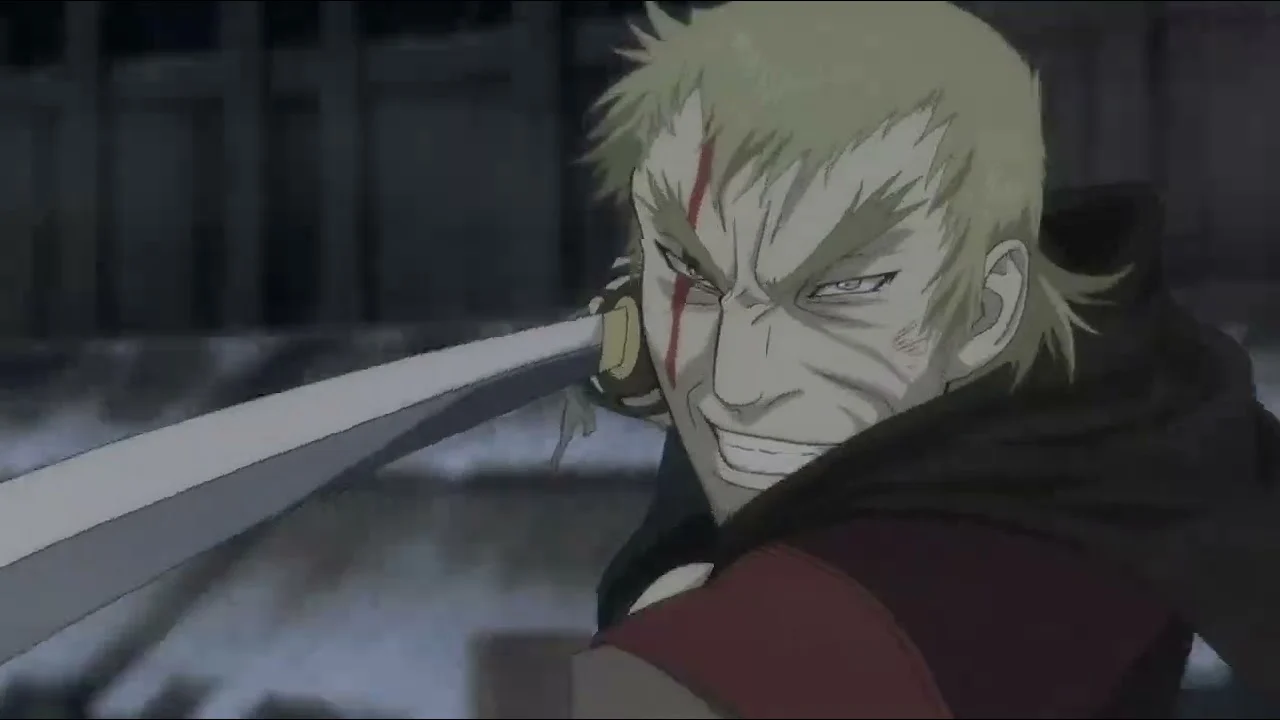
The fight choreography focuses on clear, grounded movements and precise blade work, rather than overly fast attacks. The snowy background makes the blades easy to see, allowing for quick cuts without losing track of the action. Sound effects and the character’s breathing are carefully timed with each strike, creating a strong rhythm without sacrificing speed. After complex moves, the camera returns to a standard angle, ensuring the characters remain clear and easy to follow until the end of each attack.
Shirou Emiya vs. Archer from ‘Fate/stay night: Unlimited Blade Works’

Ufotable expertly syncs the animation with the rhythm of magical incantations, aligning the length of each cut with the beat. In the ‘Unlimited Blade Works’ arena, weapon effects create a sense of depth by layering images and appearing exactly when needed. Animations clearly show the path of attacks with smooth arcs, culminating in impactful bursts of sparks when they connect. Seamless transitions between different camera angles – from close-ups to wide shots – are achieved by matching the characters’ poses.
Jotaro Kujo vs. DIO from ‘JoJo’s Bizarre Adventure: Stardust Crusaders’
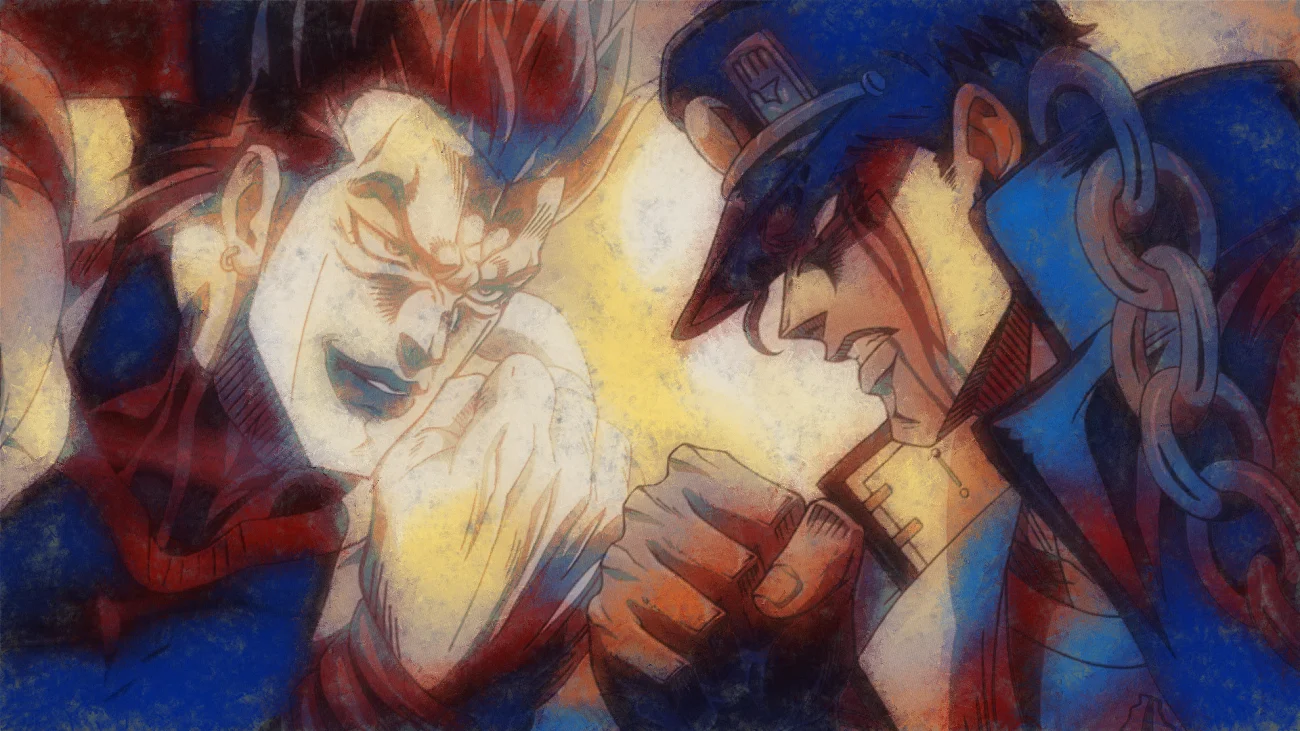
David Production visually represents pauses in time as complete stops, but with subtle movements – like floating objects slowly drifting – to show that time isn’t completely frozen. Punches are delivered in quick bursts, each ending with a noticeable pause before the next attack. During important moments, the color scheme simplifies to make characters stand out clearly, even as the camera moves. The animation frequently reuses static backgrounds to highlight how characters change position when time starts and stops.
Isaac Netero vs. Meruem from ‘Hunter x Hunter’

The fight scene in Madhouse is paced like the repeated strikes of the “Hyakushiki Kannon,” creating a steady, rhythmic beat that highlights how quickly Meruem adjusts his defenses. The camera pulls back during the sequence, showing more of the battle area while keeping the horizon level. As the fight intensifies, more visual effects are added, making the scene increasingly dynamic. Finally, the last attack is shown with faster and faster cuts, giving the impression of incredible speed and power.
Gon Freecss vs. Neferpitou from ‘Hunter x Hunter’
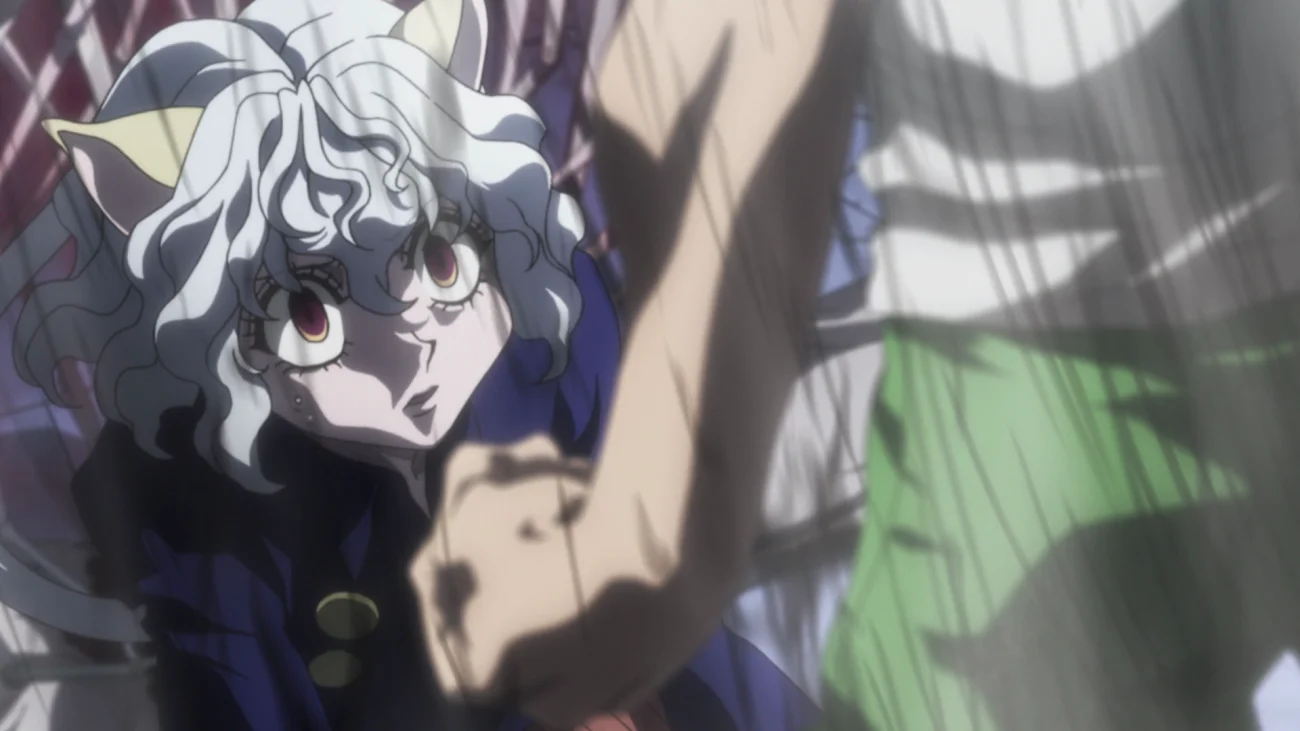
The animation uses timing to create a sense of power and impact. Movements build slowly, creating anticipation, then burst into quick action. The camera stays steady during key moments, so the force of the action comes from the characters’ movements themselves. Quick motions are shown with brief, solid streaks that maintain the character’s shape, emphasizing speed. Sound effects are timed just after the animation of a hit to make it feel heavier and more substantial.
Thorfinn vs. Thorkell from ‘Vinland Saga’
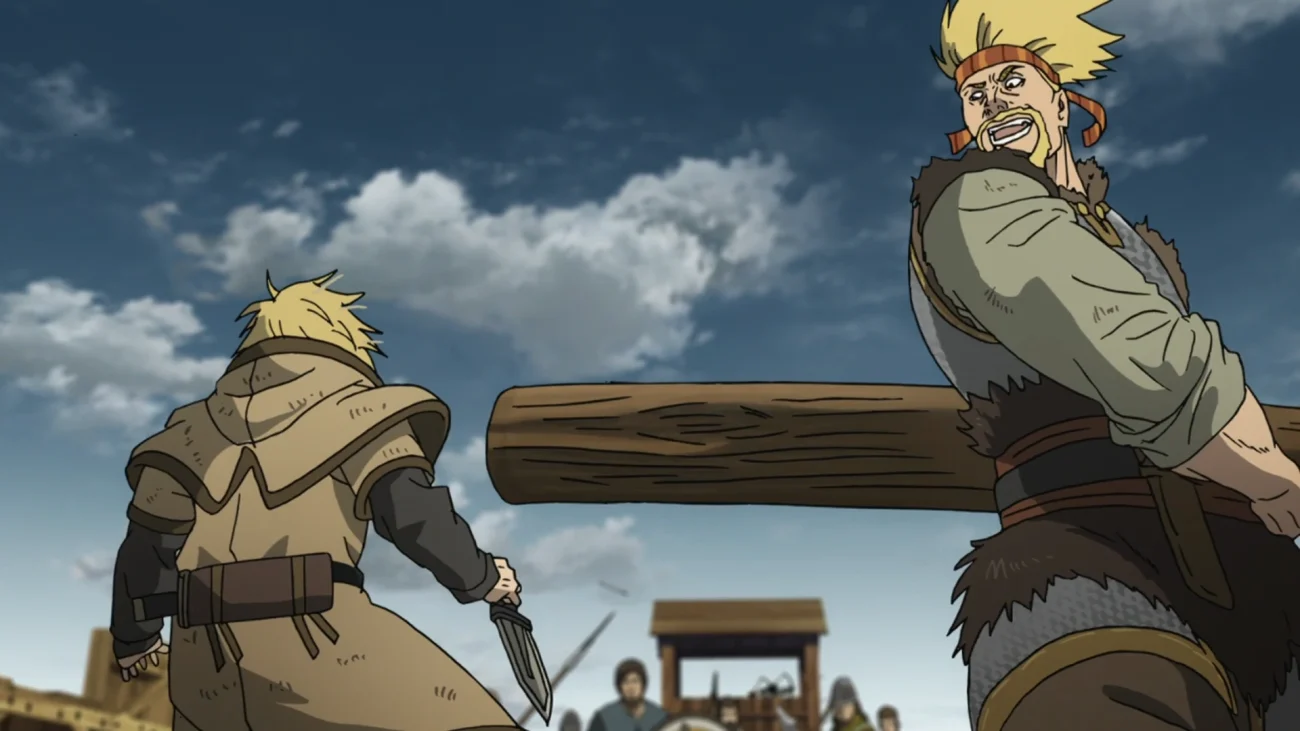
WIT Studio’s animation feels incredibly grounded because it carefully shows how weight shifts during movements – you can clearly feel the impact of each step and turn before a character attacks. Sword swings are drawn with clean, precise lines, making it easy to follow the blade’s path. The animation uses camera angles effectively – wide shots show the full range of motion, then quickly cut to closer views during impact, which helps emphasize the power. Even effects like snow and clothing movement are slightly delayed to realistically show how characters react to force.
Ryuko Matoi vs. Satsuki Kiryuin from ‘Kill la Kill’
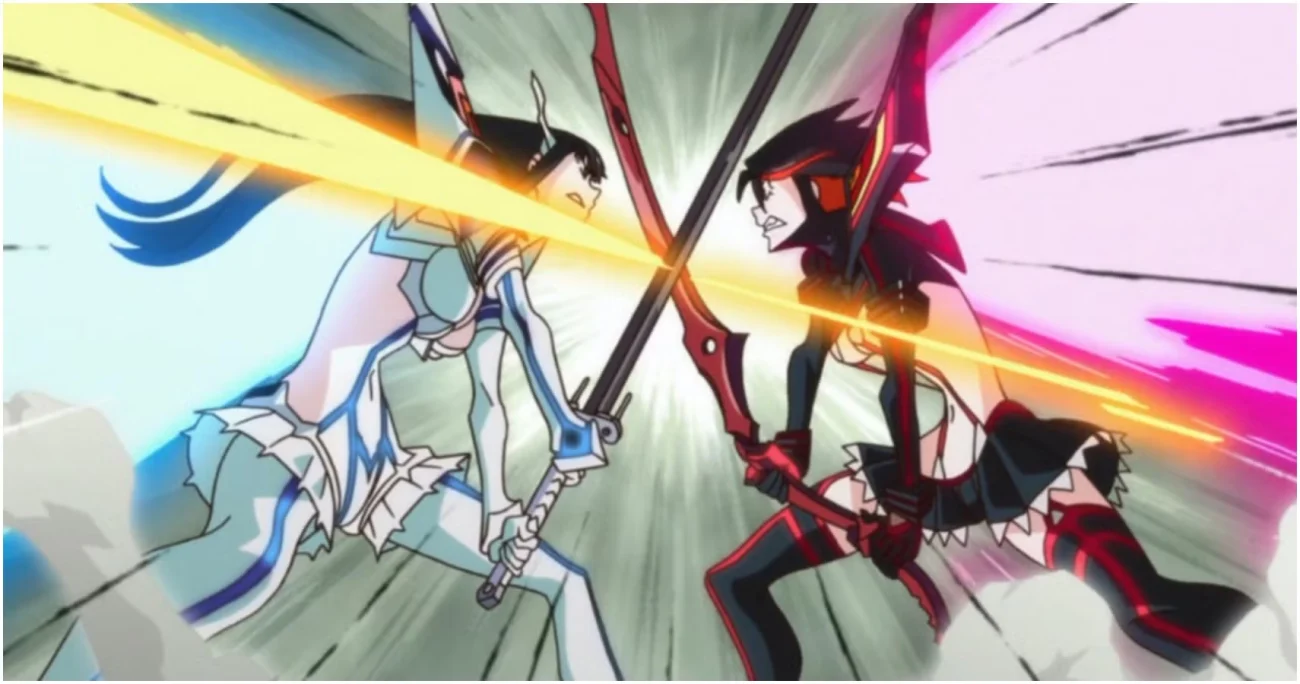
Trigger emphasizes clear, impactful poses over complex movement by using dramatic timing – quickly snapping into long holds. Camera movements follow lines in the background that change with perspective, helping to guide the viewer’s eye. Animation effects are designed with strong, simple shapes that perfectly align with key moments of impact. The way scenes are set up often shows both fighters from the side, making it easy to follow their actions and the flow of the fight, even during fast-paced exchanges.
Spike Spiegel vs. Vincent Volaju from ‘Cowboy Bebop: The Movie’
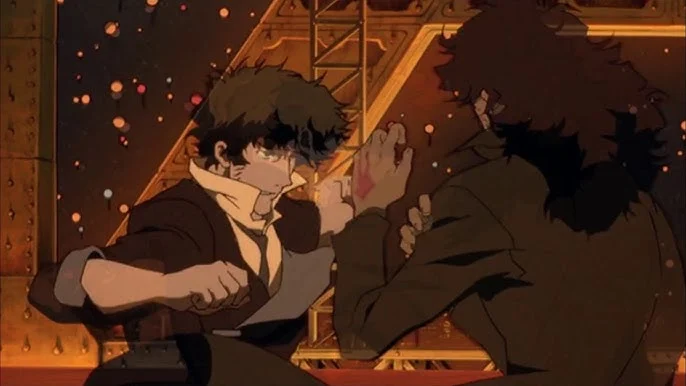
The fight scenes in Bones are carefully crafted to feel authentic, with movements timed like real strikes, blocks, and counterattacks. The camera work gives you just enough time to follow the action without getting lost, even when the shots are close up. Objects in the environment react realistically to impacts, adding to the feeling of power. The use of color helps to make the fighters stand out against the dark backgrounds, ensuring you can still follow the fast-paced combat.
Mugen vs. Kariya Kagetoki from ‘Samurai Champloo’
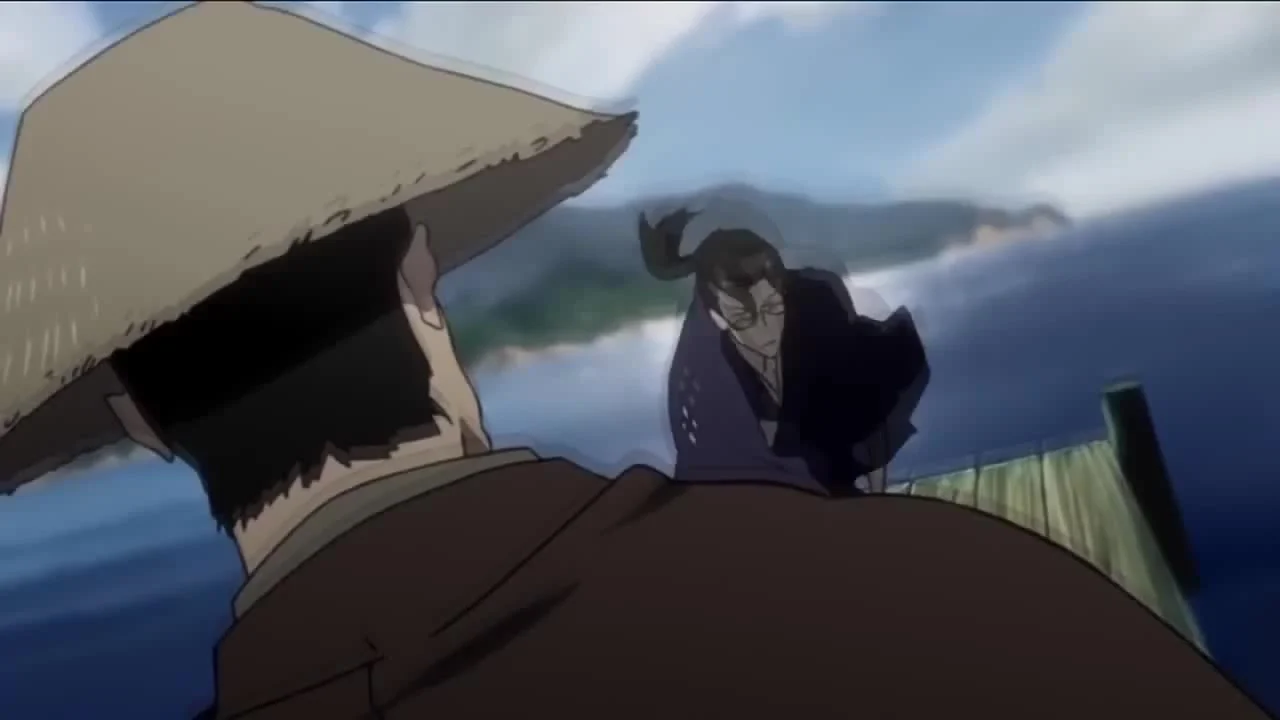
Manglobe’s fight scenes are carefully timed to the music, with cuts landing on the beat for a more impactful rhythm. The backgrounds smoothly rotate to keep the action feeling grounded as characters move, avoiding jarring shifts in perspective. Instead of blurry motion, the animation uses crisp lines and brief pauses to emphasize changes in the fighters’ positions. Details like dust and clothing movements are subtly delayed to create a sense of speed and deceleration.
Afro vs. Justice from ‘Afro Samurai’
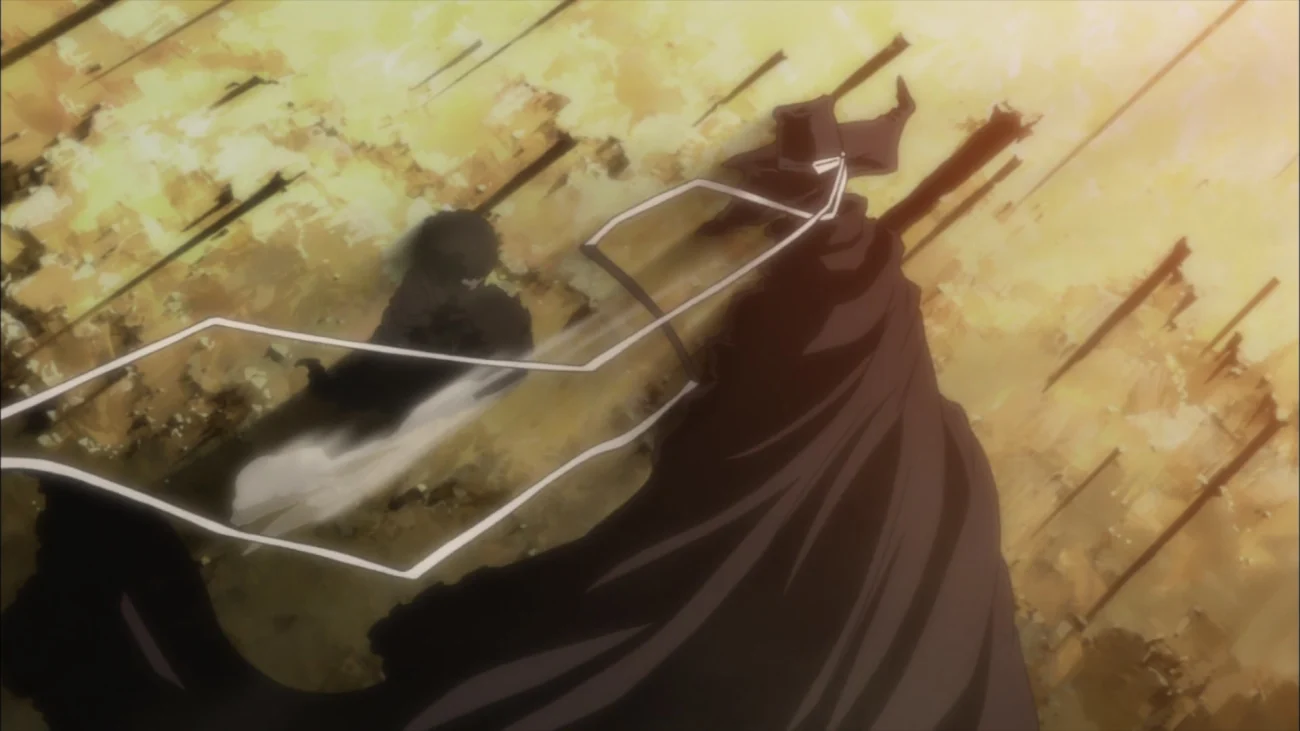
The editing carefully times visual effects like capes and hair to move naturally without obscuring the characters during action. Camera movements smoothly follow the characters as they talk and move around. When characters hit each other, the frames briefly brighten and show ink splatters that match the impact. The camera also switches between high and low angles to clearly show how tall the characters are and how far apart they are.
Roronoa Zoro vs. King from ‘One Piece’
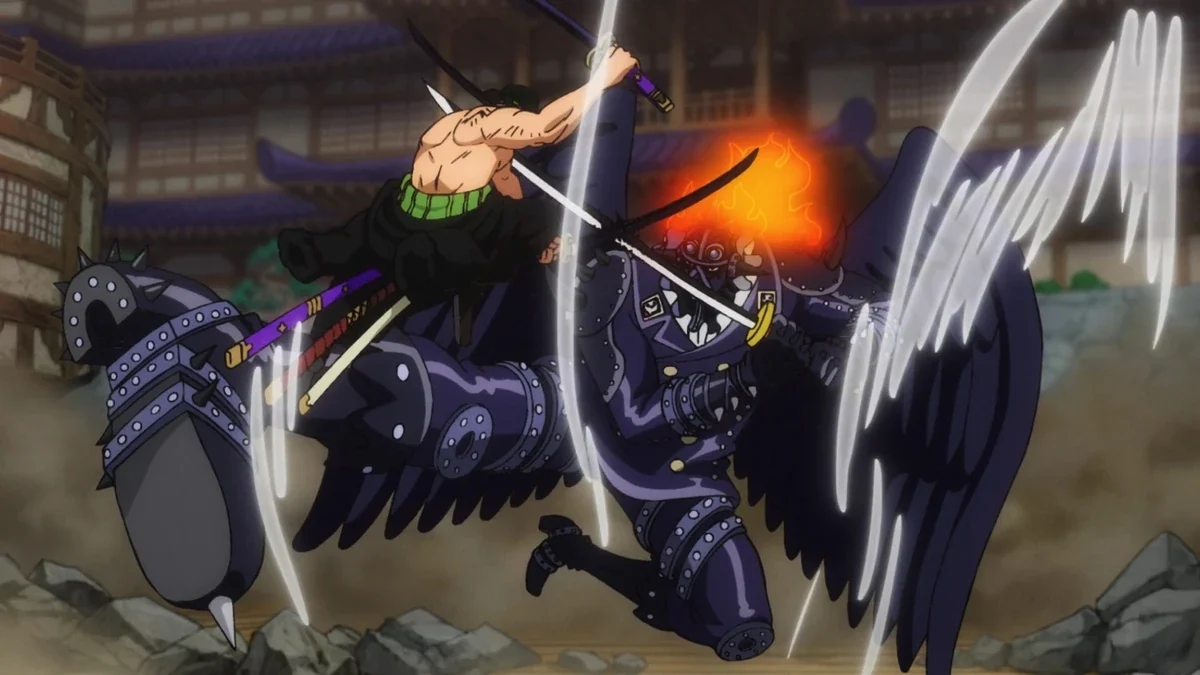
Toei Animation carefully times visual effects like fire, shockwaves, and falling debris, making sure each one hits at a different moment for maximum impact. Fights switch between close-quarters grappling and fast-paced aerial attacks, and the camera often pulls back to show a wide view before a powerful finishing move. Motion blur and speed lines are used mostly when characters are approaching, so you can clearly see where swords are connecting. When characters fly, changes in height are made clear through scaling and background movement.
Yuji Itadori & Aoi Todo vs. Hanami from ‘Jujutsu Kaisen’
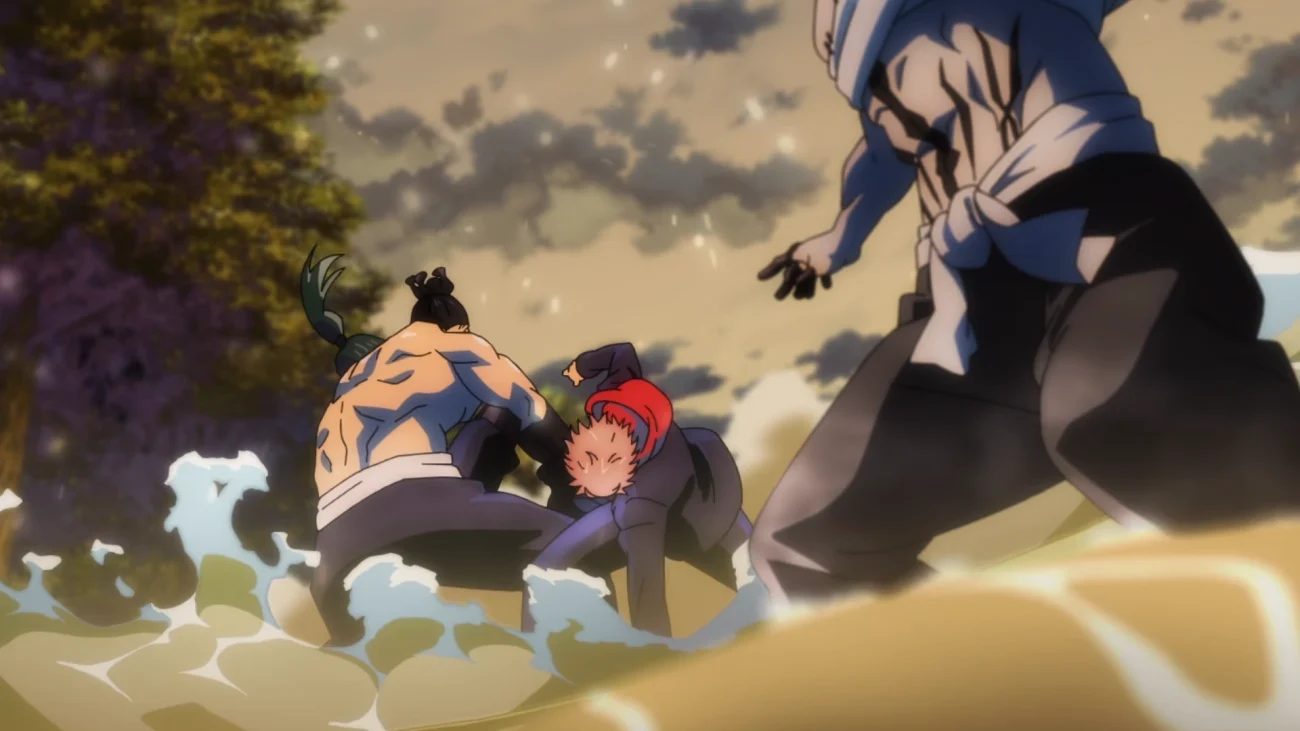
As a fan, I’ve noticed how MAPPA handles the action in Jujutsu Kaisen is really clever. It’s like they choreograph fights as if characters are passing a baton – one character leaves a move just as the next one comes in, making everything flow seamlessly. The special effects for cursed energy aren’t exactly synced with the movements, which gives them this cool trailing effect without making things blurry. They also keep the camera steady, so even with super-fast teleportation, you always know which way is left and right. And visually, they strike a great balance with things like particles and shadows, so you can still clearly see the characters’ movements even when there’s a lot going on in the background, like trees or rubble.
Satoru Gojo vs. Toji Fushiguro from ‘Jujutsu Kaisen’
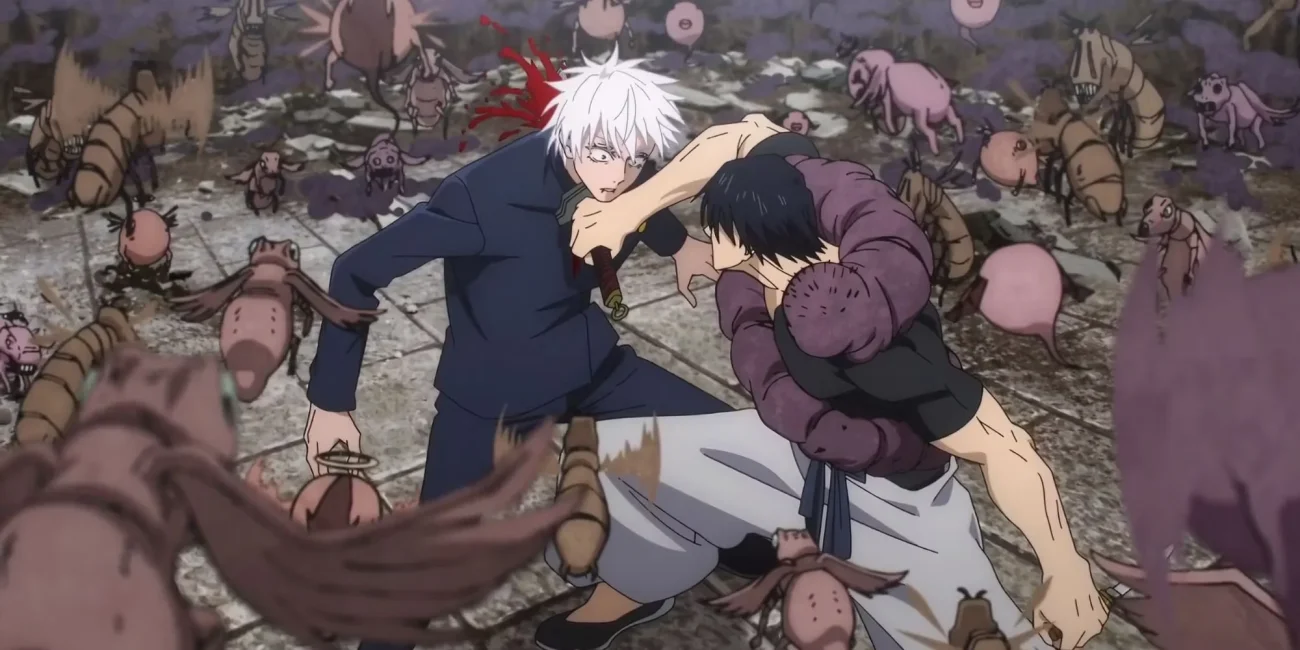
The editing emphasizes quick changes in direction, highlighted by Gojo’s fast-paced attacks. In contrast, Toji’s movements are deliberate and powerful, clearly distinguishing his fighting style. The editing also uses wide shots to show distance before returning to close combat. Visual effects, like distortions and afterimages, are carefully timed to match when characters use their abilities.
Edward Elric & Ling Yao vs. Envy from ‘Fullmetal Alchemist: Brotherhood’

The action sequences are built around realistic movements and impacts, showing how actions cause reactions. Transformations are carefully animated to maintain a smooth appearance and avoid jarring changes. Damage to the environment, like cracks and falling debris, visually emphasizes the power of each blow, appearing right when the impacts happen. The camera frequently pulls back to wide shots, ensuring the viewer always understands the layout of the fighting area even as the intensity increases.
Ichigo Kurosaki vs. Ulquiorra Cifer from ‘Bleach’
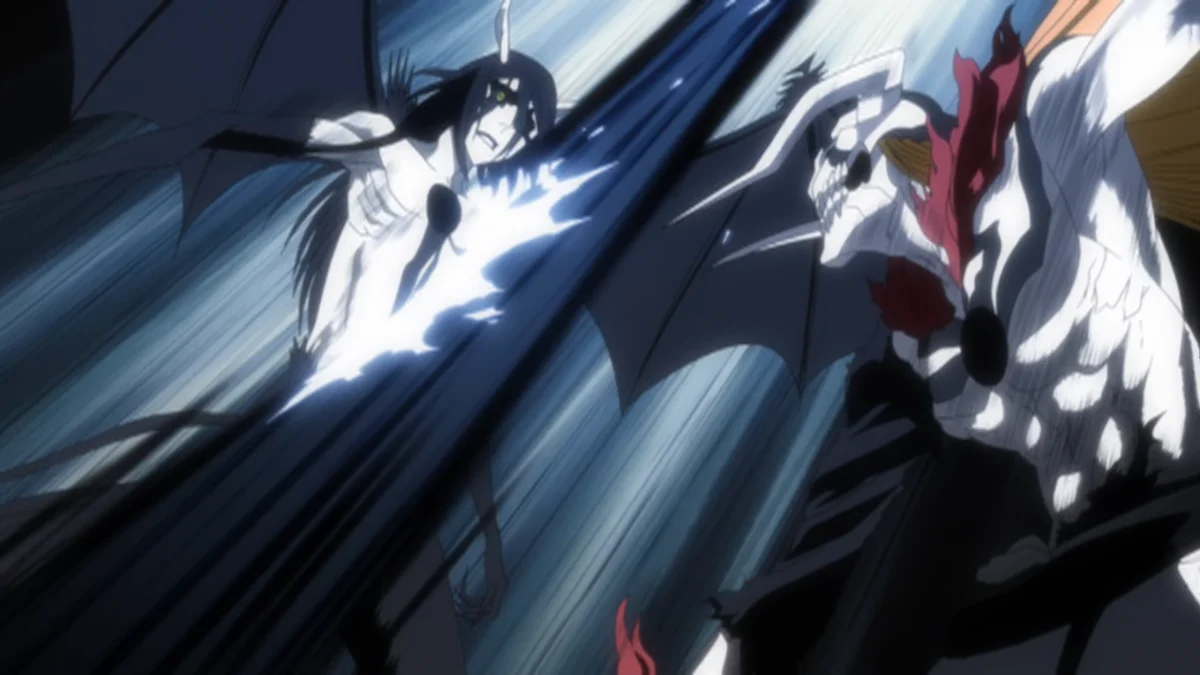
The game emphasizes vertical movement with long falls and exciting mid-air battles. It carefully paces descents to maximize the feeling of speed and impact. Powerful energy attacks are timed with offset flashes to prevent the screen from becoming too bright during intense exchanges. Character outlines stay clear and defined, using subtle motion blur and well-timed pauses in animation. The camera shifts between head-on and angled views to ensure wings and horns are always visible, even during rapid turns.
Denji vs. Katana Man from ‘Chainsaw Man’
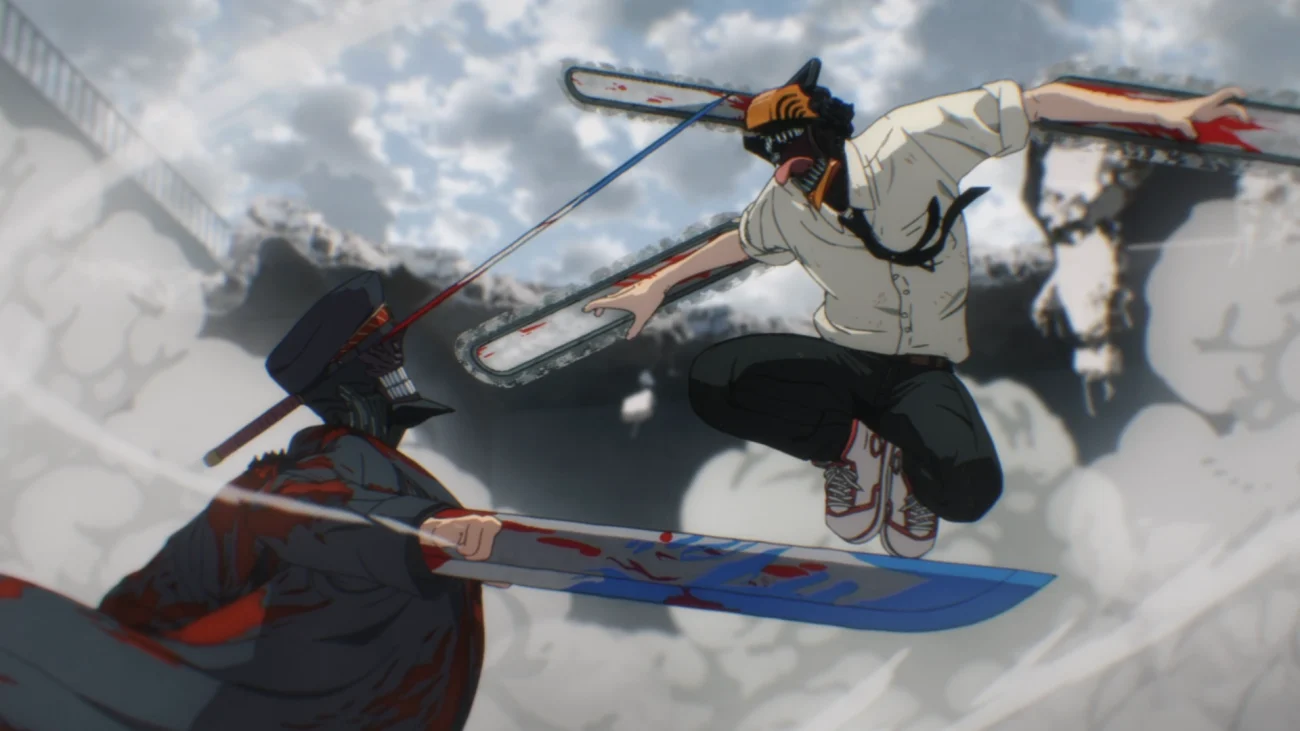
MAPPA’s animation combines computer-generated elements with traditionally hand-drawn movement. They synchronize the rotation of mechanical parts with the action, using a fast frame rate for those elements while characters move at a slightly slower pace. Backgrounds move smoothly, maintaining a sense of perspective as characters run and jump. Impactful moments, like splashes of blood or falling debris, are added a few frames later to highlight the action without hiding the characters’ shapes. The animation also frequently uses wide shots to clearly show how characters are moving up and down across rooftops and trains.
Share your favorite examples of razor-sharp fight timing in the comments!
Read More
- Robert Kirkman Launching Transformers, G.I. Joe Animated Universe With Adult ‘Energon’ Series
- Avantor’s Chairman Buys $1M Stake: A Dividend Hunter’s Dilemma?
- NextEra Energy: Powering Portfolios, Defying Odds
- AI Stock Insights: A Cautionary Tale of Investment in Uncertain Times
- Hedge Fund Magnate Bets on Future Giants While Insuring Against Semiconductor Woes
- EUR TRY PREDICTION
- Ex-Employee Mines Crypto Like a Digital Leprechaun! 😂💻💸
- UnitedHealth’s Fall: A Seasoned Investor’s Lament
- The Illusion of Zoom’s Ascent
- Oklo’s Stock Surge: A Skeptic’s Guide to Nuclear Hype
2025-11-10 02:17